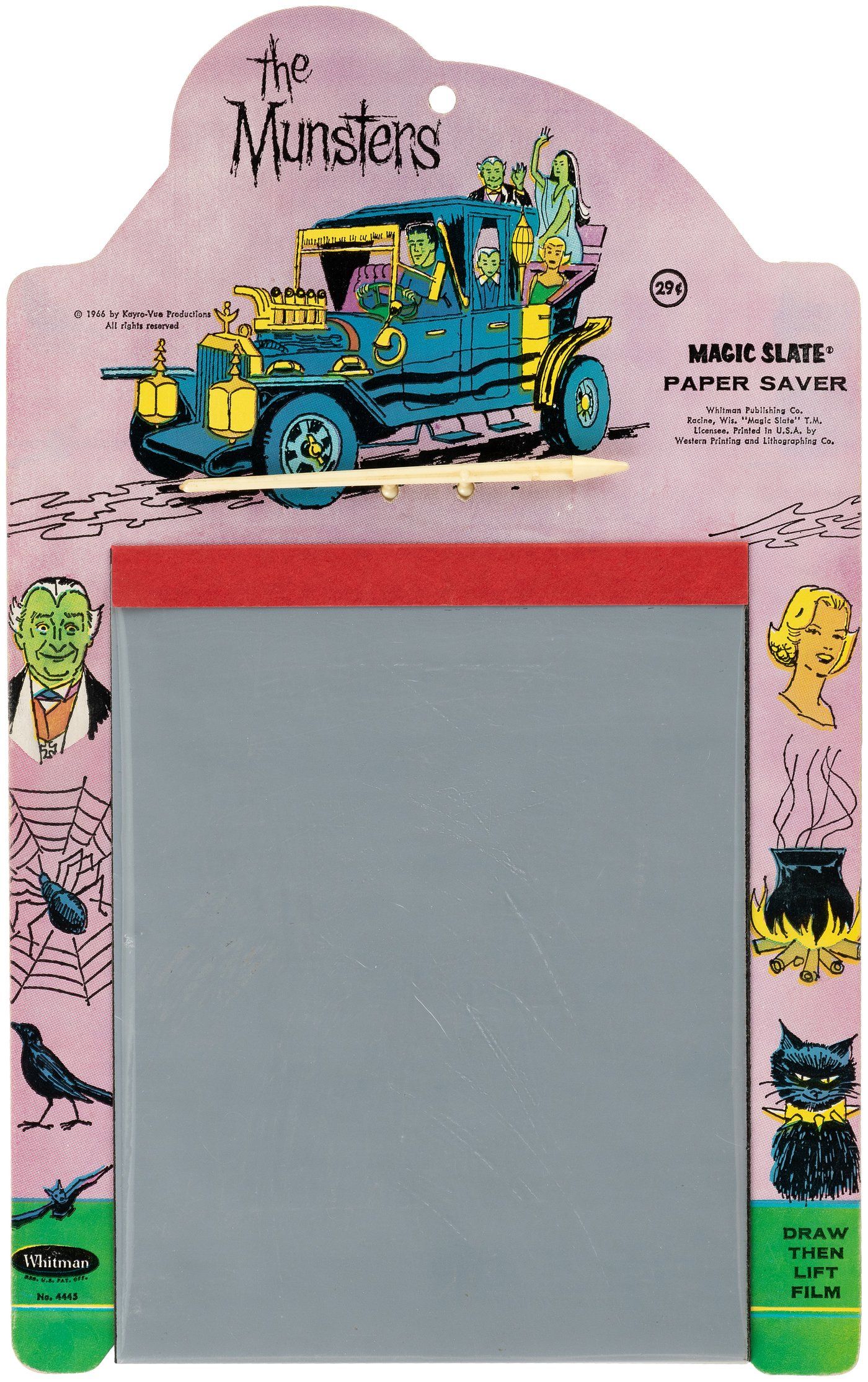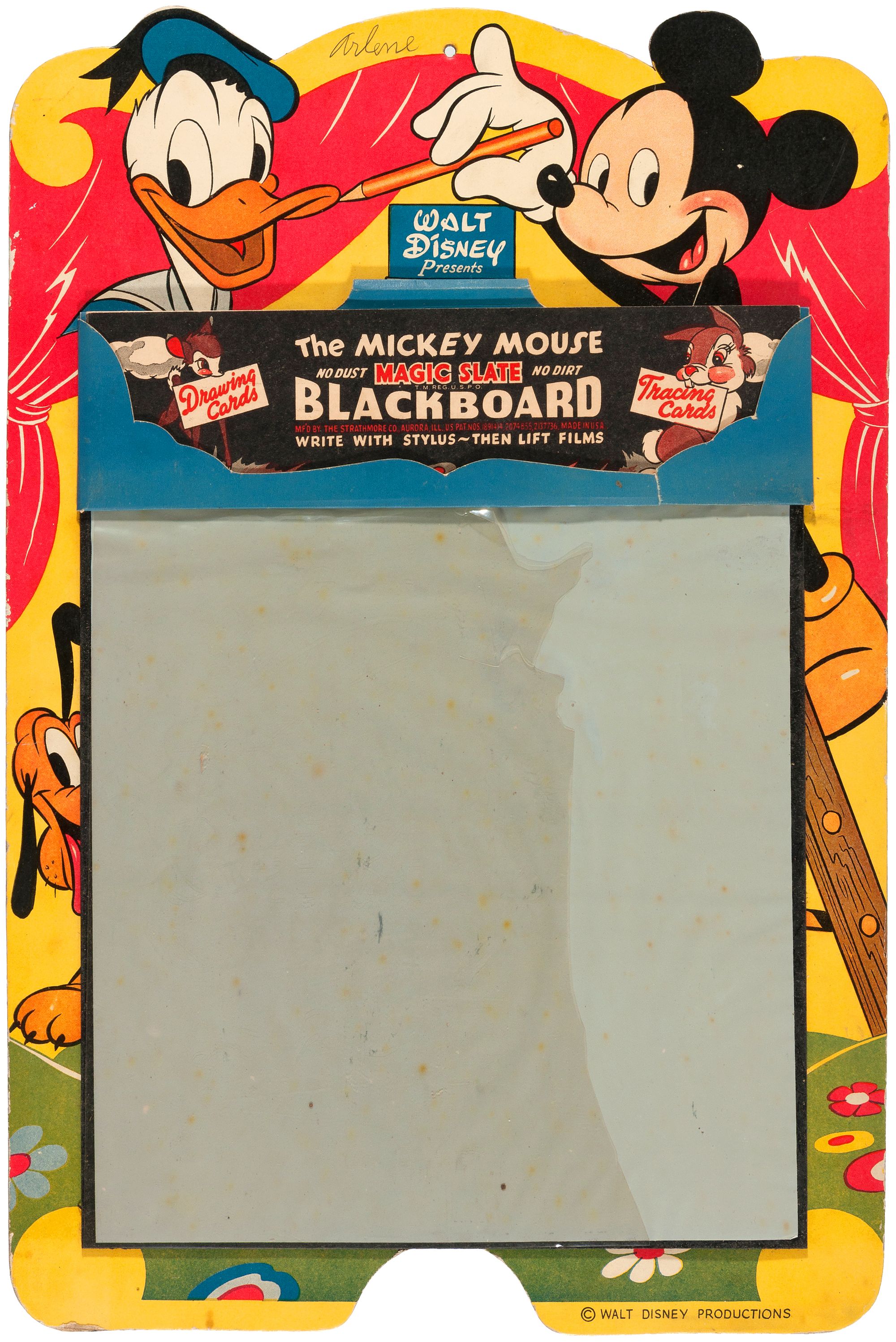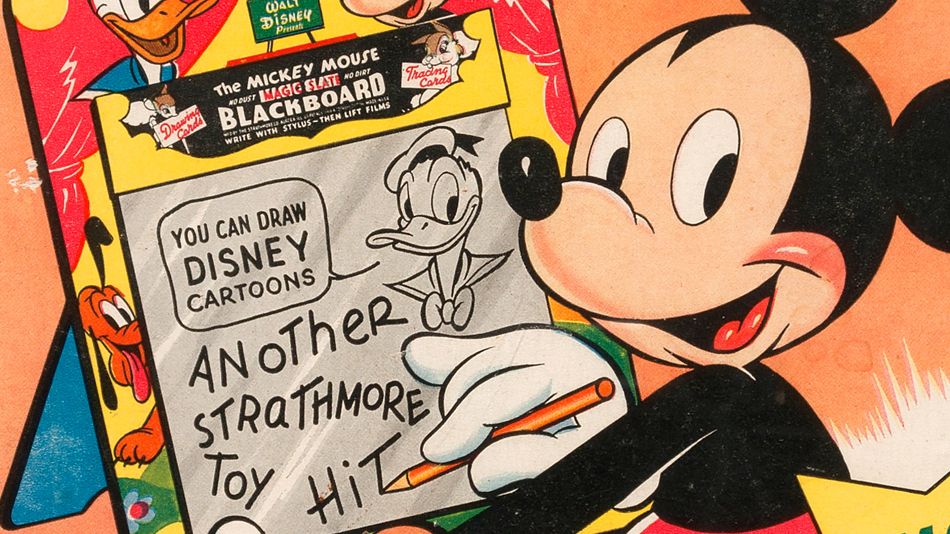Spy stories are great. They're great when they’re intricate, gritty thrillers and they’re great as cartoony, action romps. Some of the best parts of these stories are the tools spies use. In the grittier ones, you get to see the inventive ways covert operatives used and manipulated real-world technology. In the more over the top takes, you get to see all sorts of wacky, implausible gadgets. So what exactly do you imagine when you think about a spy’s arsenal? A pen with a recording device in it? A car that turns into a submarine? An umbrella that's secretly a dart gun? What about a piece of cardboard, wax, and plastic with a picture of Donald Duck printed on it? I speak, of course, about the venerable Magic Slate Paper Saver, the unsung, silent hero of the Cold War.
The Magic Slate is one of the all-time great cheap toys. It is a veteran of children's party gift bags and impulse buy displays at both grocery and dollar stores. It's no doubt been an integral part of many a last minute gift for an estranged nephew or grubby classmate. It works by pressing a blunt stylus into a sheet of acetate that rests atop a plane of colored wax. The acetate adheres lightly to the wax when pressed and the wax's color appears through the translucent plastic. You can then erase your creation by simply lifting up the acetate sheet. Everything disappears in the soft whisper of peeling plastic.
This unassuming toy has cut a strange, curving course through history. It traveled from the workplace to the toy box to the US Embassy in Moscow. It started with a utilitarian purpose, became a whimsical children’s toy, and then went back to work but this time in the high-stakes world of Cold War politics. The Magic Slate has been around since the Jazz Age, and like jazz, it is an American creation. Its inventor, R.A. Watkins came up with the idea in 1923, while working in a corset factory. He used a wax board and some leftover scraps of plastic. Watkins originally conceived of the device as a way to save paper. It was to be a reusable, erasable time sheet for use on the factory floor but Watkins took it home to his kids and learned where the real money was to be made. He patented the device and begin manufacturing the slates to sell as toys.
The Magic Slate was an enormous success and over time became something of a license magnet. There are Magic Slates emblazoned with the visage of nearly every youth-targeted intellectual property from the 1950s to the 1980s and even quite a few beyond that. Pretty much every Hanna-Barbera character has one, from the noble and beloved Cattanooga Cats to the loathsome, accursed Shirt Tales. There are Disney Magic Slates with characters like Bambi on them, but there are also Warner Brother’s slates for Tunes of a Loonier persuasion. There are slates for DC Comics heroes like Batman but also Marvel characters like The Hulk. The Magic Slate is a grand unifier. Magic Slate is the only brand I can think of that has tied into Benji, Gremlins, and Pokemon. It's profoundly universal. If a concept can be represented using images it and can and most likely will be printed on a Magic Slate frame.

The long life of the Magic Slate isn't all Groovie Ghoulies and Brady Bunch though. There came a time when it was called on to do important, dangerous work and the Magic Slate did not shy away from this portentous duty. In the book Dead Drop: The True Story of Oleg Penkovsky and the Cold War’s Most Dangerous Operation by Jeremy Dunn, there’s a mention of Magic Slates being used in the US Embassy in Moscow during the '60s. The Russians had gifted the embassy a carved, wooden facsimile of the Great Seal of the United States. This seal was found to be fitted with a hidden listening device and this revelation forced everyone working in the embassy to assume the whole place was wired for Soviet surveillance.
Magic Slate were cheap and plentiful. They provided a way to communicate silently while leaving behind no physical residue that could be reassembled and decoded if dispossessed of carelessly. All it takes is a flick of the wrist and it's all gone. The assumptions made by the workers in the embassy proved correct. The Soviets were, in fact, listening to their conversations. The Magic Slate served its country ably. With its duty discharged, the humble Magic Slate settled into retirement. It left the cold Moscow air behind for warmer climes, the toy aisle specifically. For two decades it got to rest its weary wax. The world grew more complicated every day and it seemed increasingly unlikely that anybody would need the old Paper Saver again.

This is a spy story though, and like all great spies, the Magic Slate got called out of retirement for one last job. Its country needed it and the Magic Slate had no choice but to heed the call of duty once more. It was 1987 and the Slate’s old enemies were back at it. The Soviets had been caught bugging the embassy in Moscow once again. The Magic Slate ended up in the hands of visiting senators and aides were buying the toy by the dozens. The renewed use of Magic Slates in Moscow was reported on by a few news outlets and ended up being a major PR boon for Western Publishing, the company that owned the rights to toy at the time. They actually sent several crates, containing a total of thousands of Magic Slates, to the Secretary of State, the Director of Central Intelligence, and even President Ronald Reagan himself. These donations were rejected, however. It was too late, the surveillance issue had already been rectified. Unlike the heroes of most spy stories, the Magic Slate made it through its final mission unscathed and was allowed the peaceful retirement it deserved.

